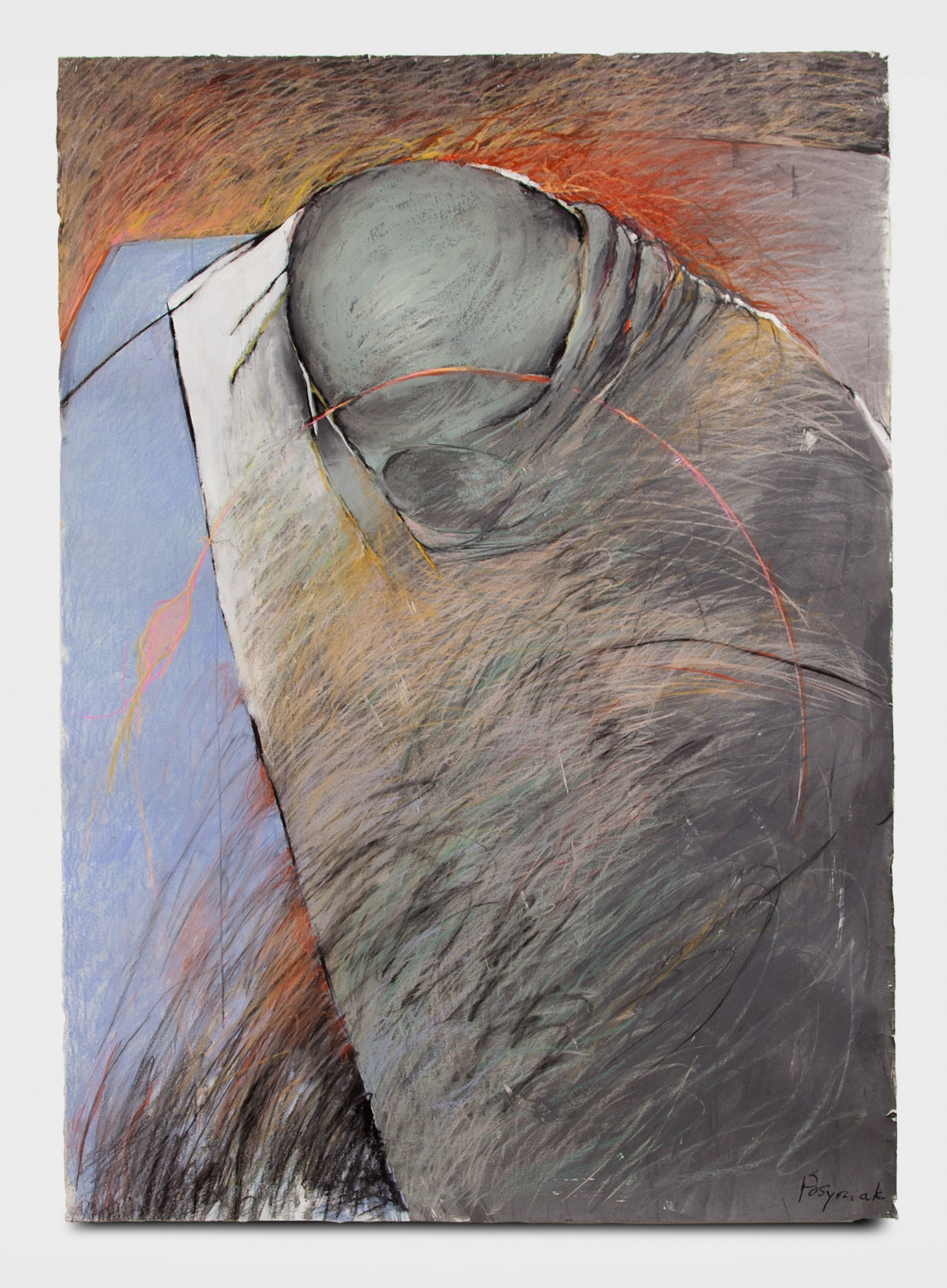Drifters & Blooms
DRIFTERS & BLOOMS
MONIQUE WESTRA
For many years, Teresa Posyniak has probed complex metaphysical issues about the nature of life. What is the essence of life? Over thirty years ago, a sense of vitality and growth was conveyed through movement in sweeping lines, flowing shapes and high contrast as in Life Trilogy (I, II & III) a monumental triptych painted when she was pregnant. Here, as in Budding 1 and Budding 2, the beginnings of life are intuited, expressed in fluid visual metaphors boldly drawn in sinuous, overlapping and intertwined shapes. Posyniak’s earlier large-scale paintings are poetic incantations of the life force, a subject which continues to intrigue her.
Her art reinforces the notion that we are all interconnected, sharing the same cellular building blocks of life, revealed in the myriad, complex and beautiful patterns that comprise all microscopic life forms. In relating “the microscopic to the megascopic,” Posyniak recognizes these patterns in the visible world as well, in the lace she collages into her works, in flowers, trees, skin, clouds, stars, decorations, textiles and architecture.
For over ten years, Posyniak has been fascinated by plankton, almost invisible creatures living in the oceans, lakes and rivers that play a crucial role through photosynthesis by converting sunlight into more than half of the earth’s oxygen. They are essential to life on this planet. As an artist, Posyniak is seduced by their exquisite and infinitely varied anatomical structures as seen under the microscope. Although her imagery is based primarily on plankton, her paintings transcend their specific source to evoke broader and more universal meanings. Her art may be grounded in readings about science, but the way she paints is remarkably visceral, intuitive and passionate. It is as if she has internalized her knowledge and transformed it into pure feeling during the creative process. She “inhabits” her paintings in her imagination, vicariously feeling in her own body the ebb and flow of floating forms drifting, colliding, moving up and down, in and out, back and forth.
She starts by drawing specific plankton skeletons recreated from memory. As she spontaneously composes, other shapes and objects are introduced, prompting visual dialogues in space. Working with a variety of mediums, she creates her paintings over a period of time, building up many layers. The additive is countered by the subtractive, as she gouges, etches, and scratches into the accruing thick surface. Buried forms are at once obscured and revealed, as in a palimpsest, in a constantly changing, organic process of art creation. The paradox inherent in Posyniak’s plankton series is that scientific fact is transmuted through art and imagination into fantasy - an evocative, evolving world of infinite mystery and wonder as in the hauntingly beautiful Moon and Coccolithophores.
Similarly, Cumulus Bloom, Turquoise Bloom and Nucleus Dreams are dense, thickly-encrusted, textured, collaged, nuanced and enigmatic. By contrast, other works are more dynamic, linear, and gestural, compressing and releasing bursts of compacted energy. Microbial Graffiti is an explosive field of swirling, intense colours and overlapping lines while, in the expansive diptych The Drifters, an agitated centre teems with life forms. One senses in these works the epic struggle of life.
Monique Westra is a Calgary-based independent curator, writer and artist who is well-known locally as a dynamic speaker. From 2002 to 2010, she was an art curator at the Glenbow Museum. Westra is the author of numerous publications on historical and contemporary art.













